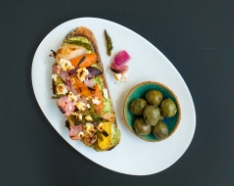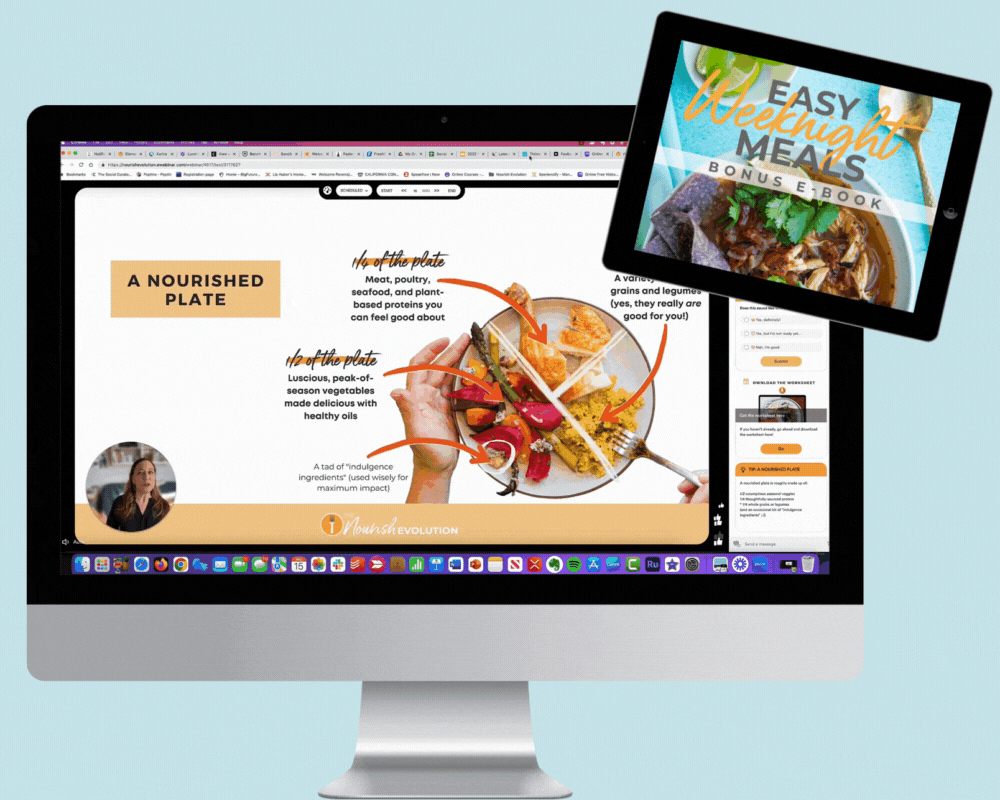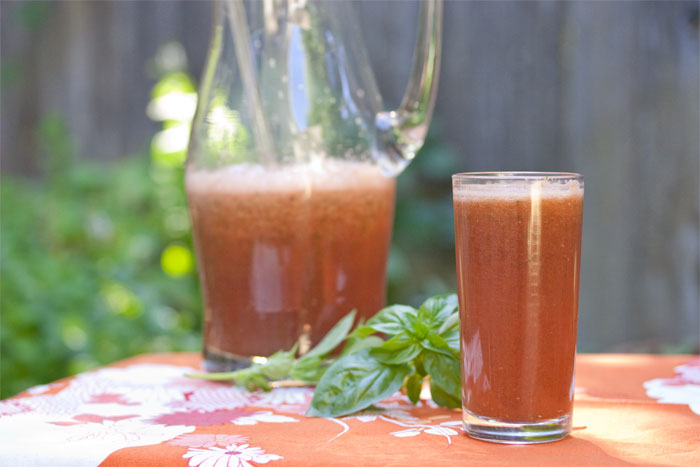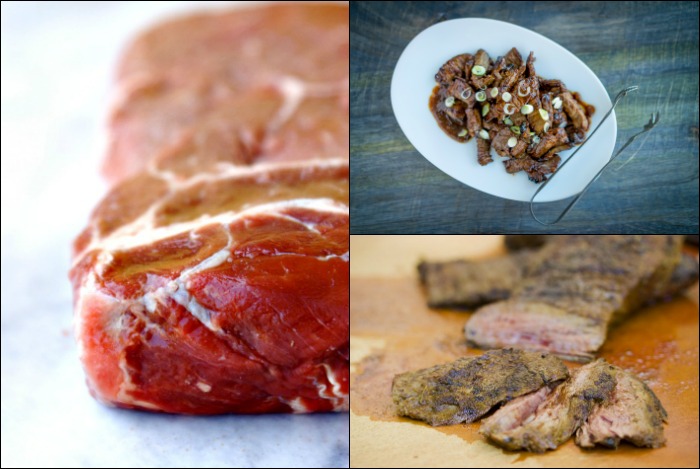It used to be simple. You’d hear “Beef: It’s what’s for dinner®,” grab a steak, a roast or some burger, cook it and eat it. No questions, no fuss. But then different messages started cropping up. Things like “beef can make you sick,” “you can catch mad cow,” “cattle ranches cause global warming” and “have you seen the way those cows live?” Suddenly a seed of concern and confusion is planted, about how the beef you’re eating affects the health of your family, the health of the earth.
To complicate things further, once you do start to dig deeper into what’s really on your plate you find a morass of terms and labels and legal definitions. Does “natural” mean the same thing as “organic?” (uh uh) Does “grass fed” mean happy cows in a bucolic field in Iowa? (nope again). Here’s a guide (in alphabetical order) to understanding the jargon so that you can decide what’s for dinner.
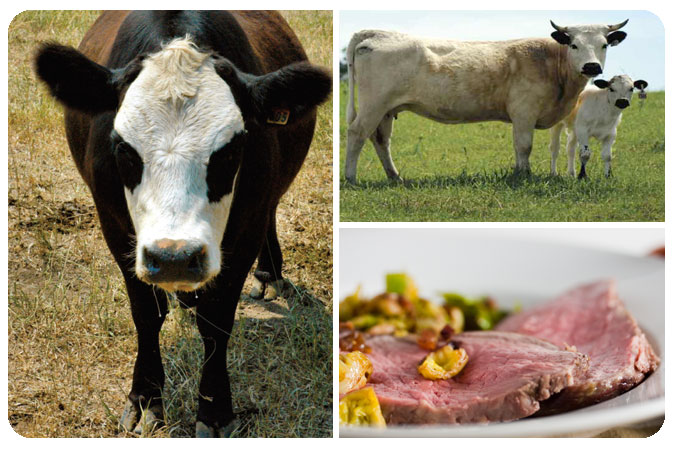 All-Natural (or just “Natural”) – An almost meaningless term when applied to meat, “natural” legally refers to any unprocessed (and now even some processed) cut of meat. The animal may have been confined, fed GMOs (see below), hormones, animal by-products, etc. and still legally bear the label “natural.” Then again, it may have been raised in an idyllic setting roaming free on the prairie. The issue with this term is that you just don’t know what you’re getting by label alone.
Animal Welfare Approved – Stringent rules set forth by the Animal Welfare Institute (an independent, non-governmental agency) guarantee that farm animals are raised in healthy, natural, outdoor environments where they can forage and raise their young the way they were meant to. Hormone and sub-therapeutic antibiotic (see below) use is not allowed.
Corn Fed – The vast majority of cattle in this country are raised on corn. They spend their young lives on pasture, but are soon transferred to Confined Animal Feeding Operations (CAFOs) where they are fattened on corn and soy. The main downside to this is that as ruminant animals (a species of grazing animal whose stomach is divided into four components to allow it to digest grasses and the like), cows aren’t designed to digest corn, which leads to health problems that require antibiotic and hormone use to control. The population density, also, contributes to both ecological and health issues.
GMO (genetically modified organism) – A useful term to know for this discussion because most “conventional” beef is fed a diet of GMO corn and soy, despite the fact that the jury is still out on the political, social, health, environmental and economic impacts of GMOs (more, much more, on the GMO discussion later here on NOURISH Evolution). GMOs are not permitted in organic beef and they have been banned in the EU.
Grass Fed – In 2007 the USDA established a standard definition for the “grass fed” claim, which requires “continuous access to pasture” and prevents animals from being fed grain or grain-based products. It was a good start. Now reinforcement is the challenge.
Grass or Pasture Finished – This term is more about the end of a cow’s life than how it was raised. Grass-finished cattle may have been raised on grain, but put to pasture for a short time before slaughter. There are benefits, though; some studies have shown that allowing two weeks on pasture right before slaughter can cause a cow to shed 90% or more of the harmful e Coli in its digestive tract, reducing the likelihood of infected meat.
No Hormones or Antibiotics – Cows consume 70% of the antibiotics in the US, most of it in their feed, which means they get the drugs whether they need them or not. This can lead to serious problems with antibiotic resistance in cows and humans alike, as well as potential contamination of groundwater. Claims of “no sub-therapeutic antibiotics” mean that cows get antibiotics only if they’re sick, as opposed to as a preventative. As for hormones, Major League Baseball has stricter bans on them than our food system does. They’re used for similar reasons in both cases, though; to get bigger and stronger faster, often putting health in peril.
Organic –Foods that carry the USDA Organic label can, for the most part, be presumed free of GMOs and artificial chemical inputs (like antibiotics and hormones). But chinks are showing in the label’s armor. Many processed foods can carry some ingredients that are not organic, and beef and dairy cattle can be raised in confinement on grain and still be labeled organic. The legal definition still protects consumers, but it is moving further and further from the philosophy that first spawned the term.
Labels are meant to be helpful, but oftentimes—as you can see—they bring more confusion than clarity. One of the best ways to be sure of what you’re getting is to know who’s raising it. Then, if you have a question, all you have to do is ask. Check out the discussion in the Eco Bites group on Sourcing Sustainable Beef for more.
Kurt Michael Friese is the founding leader of Slow Food Iowa, serves on the Slow Food USA National Board of Directors, and is editor and publisher of the local food magazine Edible Iowa River Valley. He’s also chef and co-owner of the Iowa City restaurant Devotay, a freelance food writer and photographer, and author of A Cook’s Journey: Slow Food in the Heartland.
All-Natural (or just “Natural”) – An almost meaningless term when applied to meat, “natural” legally refers to any unprocessed (and now even some processed) cut of meat. The animal may have been confined, fed GMOs (see below), hormones, animal by-products, etc. and still legally bear the label “natural.” Then again, it may have been raised in an idyllic setting roaming free on the prairie. The issue with this term is that you just don’t know what you’re getting by label alone.
Animal Welfare Approved – Stringent rules set forth by the Animal Welfare Institute (an independent, non-governmental agency) guarantee that farm animals are raised in healthy, natural, outdoor environments where they can forage and raise their young the way they were meant to. Hormone and sub-therapeutic antibiotic (see below) use is not allowed.
Corn Fed – The vast majority of cattle in this country are raised on corn. They spend their young lives on pasture, but are soon transferred to Confined Animal Feeding Operations (CAFOs) where they are fattened on corn and soy. The main downside to this is that as ruminant animals (a species of grazing animal whose stomach is divided into four components to allow it to digest grasses and the like), cows aren’t designed to digest corn, which leads to health problems that require antibiotic and hormone use to control. The population density, also, contributes to both ecological and health issues.
GMO (genetically modified organism) – A useful term to know for this discussion because most “conventional” beef is fed a diet of GMO corn and soy, despite the fact that the jury is still out on the political, social, health, environmental and economic impacts of GMOs (more, much more, on the GMO discussion later here on NOURISH Evolution). GMOs are not permitted in organic beef and they have been banned in the EU.
Grass Fed – In 2007 the USDA established a standard definition for the “grass fed” claim, which requires “continuous access to pasture” and prevents animals from being fed grain or grain-based products. It was a good start. Now reinforcement is the challenge.
Grass or Pasture Finished – This term is more about the end of a cow’s life than how it was raised. Grass-finished cattle may have been raised on grain, but put to pasture for a short time before slaughter. There are benefits, though; some studies have shown that allowing two weeks on pasture right before slaughter can cause a cow to shed 90% or more of the harmful e Coli in its digestive tract, reducing the likelihood of infected meat.
No Hormones or Antibiotics – Cows consume 70% of the antibiotics in the US, most of it in their feed, which means they get the drugs whether they need them or not. This can lead to serious problems with antibiotic resistance in cows and humans alike, as well as potential contamination of groundwater. Claims of “no sub-therapeutic antibiotics” mean that cows get antibiotics only if they’re sick, as opposed to as a preventative. As for hormones, Major League Baseball has stricter bans on them than our food system does. They’re used for similar reasons in both cases, though; to get bigger and stronger faster, often putting health in peril.
Organic –Foods that carry the USDA Organic label can, for the most part, be presumed free of GMOs and artificial chemical inputs (like antibiotics and hormones). But chinks are showing in the label’s armor. Many processed foods can carry some ingredients that are not organic, and beef and dairy cattle can be raised in confinement on grain and still be labeled organic. The legal definition still protects consumers, but it is moving further and further from the philosophy that first spawned the term.
Labels are meant to be helpful, but oftentimes—as you can see—they bring more confusion than clarity. One of the best ways to be sure of what you’re getting is to know who’s raising it. Then, if you have a question, all you have to do is ask. Check out the discussion in the Eco Bites group on Sourcing Sustainable Beef for more.
Kurt Michael Friese is the founding leader of Slow Food Iowa, serves on the Slow Food USA National Board of Directors, and is editor and publisher of the local food magazine Edible Iowa River Valley. He’s also chef and co-owner of the Iowa City restaurant Devotay, a freelance food writer and photographer, and author of A Cook’s Journey: Slow Food in the Heartland.
 All-Natural (or just “Natural”) – An almost meaningless term when applied to meat, “natural” legally refers to any unprocessed (and now even some processed) cut of meat. The animal may have been confined, fed GMOs (see below), hormones, animal by-products, etc. and still legally bear the label “natural.” Then again, it may have been raised in an idyllic setting roaming free on the prairie. The issue with this term is that you just don’t know what you’re getting by label alone.
Animal Welfare Approved – Stringent rules set forth by the Animal Welfare Institute (an independent, non-governmental agency) guarantee that farm animals are raised in healthy, natural, outdoor environments where they can forage and raise their young the way they were meant to. Hormone and sub-therapeutic antibiotic (see below) use is not allowed.
Corn Fed – The vast majority of cattle in this country are raised on corn. They spend their young lives on pasture, but are soon transferred to Confined Animal Feeding Operations (CAFOs) where they are fattened on corn and soy. The main downside to this is that as ruminant animals (a species of grazing animal whose stomach is divided into four components to allow it to digest grasses and the like), cows aren’t designed to digest corn, which leads to health problems that require antibiotic and hormone use to control. The population density, also, contributes to both ecological and health issues.
GMO (genetically modified organism) – A useful term to know for this discussion because most “conventional” beef is fed a diet of GMO corn and soy, despite the fact that the jury is still out on the political, social, health, environmental and economic impacts of GMOs (more, much more, on the GMO discussion later here on NOURISH Evolution). GMOs are not permitted in organic beef and they have been banned in the EU.
Grass Fed – In 2007 the USDA established a standard definition for the “grass fed” claim, which requires “continuous access to pasture” and prevents animals from being fed grain or grain-based products. It was a good start. Now reinforcement is the challenge.
Grass or Pasture Finished – This term is more about the end of a cow’s life than how it was raised. Grass-finished cattle may have been raised on grain, but put to pasture for a short time before slaughter. There are benefits, though; some studies have shown that allowing two weeks on pasture right before slaughter can cause a cow to shed 90% or more of the harmful e Coli in its digestive tract, reducing the likelihood of infected meat.
No Hormones or Antibiotics – Cows consume 70% of the antibiotics in the US, most of it in their feed, which means they get the drugs whether they need them or not. This can lead to serious problems with antibiotic resistance in cows and humans alike, as well as potential contamination of groundwater. Claims of “no sub-therapeutic antibiotics” mean that cows get antibiotics only if they’re sick, as opposed to as a preventative. As for hormones, Major League Baseball has stricter bans on them than our food system does. They’re used for similar reasons in both cases, though; to get bigger and stronger faster, often putting health in peril.
Organic –Foods that carry the USDA Organic label can, for the most part, be presumed free of GMOs and artificial chemical inputs (like antibiotics and hormones). But chinks are showing in the label’s armor. Many processed foods can carry some ingredients that are not organic, and beef and dairy cattle can be raised in confinement on grain and still be labeled organic. The legal definition still protects consumers, but it is moving further and further from the philosophy that first spawned the term.
Labels are meant to be helpful, but oftentimes—as you can see—they bring more confusion than clarity. One of the best ways to be sure of what you’re getting is to know who’s raising it. Then, if you have a question, all you have to do is ask. Check out the discussion in the Eco Bites group on Sourcing Sustainable Beef for more.
Kurt Michael Friese is the founding leader of Slow Food Iowa, serves on the Slow Food USA National Board of Directors, and is editor and publisher of the local food magazine Edible Iowa River Valley. He’s also chef and co-owner of the Iowa City restaurant Devotay, a freelance food writer and photographer, and author of A Cook’s Journey: Slow Food in the Heartland.
All-Natural (or just “Natural”) – An almost meaningless term when applied to meat, “natural” legally refers to any unprocessed (and now even some processed) cut of meat. The animal may have been confined, fed GMOs (see below), hormones, animal by-products, etc. and still legally bear the label “natural.” Then again, it may have been raised in an idyllic setting roaming free on the prairie. The issue with this term is that you just don’t know what you’re getting by label alone.
Animal Welfare Approved – Stringent rules set forth by the Animal Welfare Institute (an independent, non-governmental agency) guarantee that farm animals are raised in healthy, natural, outdoor environments where they can forage and raise their young the way they were meant to. Hormone and sub-therapeutic antibiotic (see below) use is not allowed.
Corn Fed – The vast majority of cattle in this country are raised on corn. They spend their young lives on pasture, but are soon transferred to Confined Animal Feeding Operations (CAFOs) where they are fattened on corn and soy. The main downside to this is that as ruminant animals (a species of grazing animal whose stomach is divided into four components to allow it to digest grasses and the like), cows aren’t designed to digest corn, which leads to health problems that require antibiotic and hormone use to control. The population density, also, contributes to both ecological and health issues.
GMO (genetically modified organism) – A useful term to know for this discussion because most “conventional” beef is fed a diet of GMO corn and soy, despite the fact that the jury is still out on the political, social, health, environmental and economic impacts of GMOs (more, much more, on the GMO discussion later here on NOURISH Evolution). GMOs are not permitted in organic beef and they have been banned in the EU.
Grass Fed – In 2007 the USDA established a standard definition for the “grass fed” claim, which requires “continuous access to pasture” and prevents animals from being fed grain or grain-based products. It was a good start. Now reinforcement is the challenge.
Grass or Pasture Finished – This term is more about the end of a cow’s life than how it was raised. Grass-finished cattle may have been raised on grain, but put to pasture for a short time before slaughter. There are benefits, though; some studies have shown that allowing two weeks on pasture right before slaughter can cause a cow to shed 90% or more of the harmful e Coli in its digestive tract, reducing the likelihood of infected meat.
No Hormones or Antibiotics – Cows consume 70% of the antibiotics in the US, most of it in their feed, which means they get the drugs whether they need them or not. This can lead to serious problems with antibiotic resistance in cows and humans alike, as well as potential contamination of groundwater. Claims of “no sub-therapeutic antibiotics” mean that cows get antibiotics only if they’re sick, as opposed to as a preventative. As for hormones, Major League Baseball has stricter bans on them than our food system does. They’re used for similar reasons in both cases, though; to get bigger and stronger faster, often putting health in peril.
Organic –Foods that carry the USDA Organic label can, for the most part, be presumed free of GMOs and artificial chemical inputs (like antibiotics and hormones). But chinks are showing in the label’s armor. Many processed foods can carry some ingredients that are not organic, and beef and dairy cattle can be raised in confinement on grain and still be labeled organic. The legal definition still protects consumers, but it is moving further and further from the philosophy that first spawned the term.
Labels are meant to be helpful, but oftentimes—as you can see—they bring more confusion than clarity. One of the best ways to be sure of what you’re getting is to know who’s raising it. Then, if you have a question, all you have to do is ask. Check out the discussion in the Eco Bites group on Sourcing Sustainable Beef for more.
Kurt Michael Friese is the founding leader of Slow Food Iowa, serves on the Slow Food USA National Board of Directors, and is editor and publisher of the local food magazine Edible Iowa River Valley. He’s also chef and co-owner of the Iowa City restaurant Devotay, a freelance food writer and photographer, and author of A Cook’s Journey: Slow Food in the Heartland. 